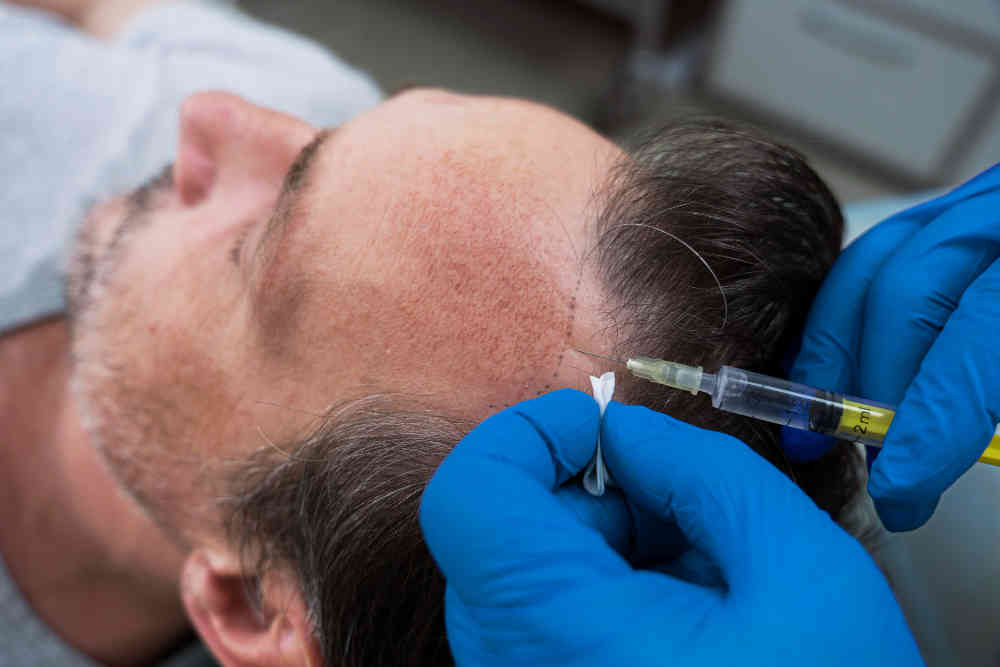Hair loss, particularly when it begins to recede at the hairline, can be a distressing experience for many. As individuals seek solutions to this common issue, one method has gained significant attention for its promising results—FUE hair transplantation. This technique offers a hopeful alternative for those facing the challenges of a receding hairline, bringing a new era of restoration technology.
Understanding FUE
Follicular Unit Extraction (FUE) is a hair transplant method that collects individual hair follicles from a donor area, commonly the back of the head. It implants them into the thinning or balding areas. This procedure is praised for its precision and minimal scarring, allowing for natural-looking results. Unlike older methods, FUE leaves no linear scars, and patients can often wear their hair short without visible signs of the transplant.
The Procedure Explained
The process begins with numbing the scalp. A specialised tool is then used to remove individual follicles. These grafts, consisting of one to four hairs each, are kept in a solution until they are transplanted to the desired area. The placement of these grafts is critical and requires the expertise of skilled specialists who ensure they follow the natural growth pattern of the surrounding area, thus enhancing the overall appearance.
Advantages Over Traditional Methods
FUE stands out from traditional transplant methods in several ways. Firstly, it is less invasive, reducing recovery time and discomfort associated with the surgery. Furthermore, the absence of a linear scar is a significant aesthetic benefit, especially for those who prefer shorter styles. This method also allows for harvesting follicles from different body parts, providing options for individuals with limited scalp donors.
Success Rates and Patient Satisfaction
The success of FUE largely depends on the surgeon’s skill and the technology used. This method obtains individual follicles from a donor and a more defined hairline within six to twelve months post-procedure. Satisfaction rates are high, with many reporting a boost in confidence and a youthful appearance. Having realistic expectations and understanding that results vary based on individual characteristics and overall health is essential.
Long-term Outcomes and Considerations
When considering FUE, it is necessary to contact a specialist to assess—the long-term viability of the transplant. One must consider factors such as potential future treatments. Maintaining the health of the scalp and newly transplanted hair through proper care and avoiding harsh treatments is vital for sustaining results.
Customisation and Versatility in Restoration
It is adaptable, allowing customisation according to each patient’s unique pattern and aesthetic goals. This individualised approach ensures that the hairline and density are tailored to fit the natural contours and features of the patient’s face, creating a more appealing and appropriate look. Additionally, the versatility of the FUE method means it can be used not only on the scalp but also to enhance other areas like eyebrows and beards, providing a comprehensive solution to restoration needs.
Post-Procedure Care and Tips
Gentle Handling of the Scalp: In the days following the procedure, the scalp must be treated with extreme care. Patients should avoid any scratching, rubbing, or picking at the transplant sites. Even when showering, lukewarm water is advised, and minimal pressure is applied. This helps prevent dislodging the grafts before they have a chance to become securely anchored in their new locations.
Avoiding Vigorous Washing: Vigorous washing can interfere with the healing process. Typically, the first wash post-transplant should be done under the guidance of medical personnel or following detailed instructions from the surgeon. To cleanse the area without harming the grafts, use a gentle shampoo free from harsh chemicals and apply light tapping motions with the fingertips (rather than a typical scrubbing action).
Refraining from Chemical-Based Products: Patients are advised to avoid using chemical-based products such as sprays and other styling products for several weeks post-transplant. These products can irritate the scalp and impede the healing process. If products are necessary, using only gentle and free of potentially irritating chemicals is essential.
Medications for Swelling and Healing: The surgeon might prescribe anti-inflammatory drugs or antibiotics to manage swelling and promote healing. Following this medication schedule is crucial for lowering the risk of infection and facilitating a smooth healing process. Pain management medications may also alleviate any discomfort during the initial days after the surgery.
Following Specific Guidelines for Activity and Sun Exposure: Patients are typically advised to limit physical activity for at least a few days post-surgery to prevent excessive sweating and increased blood flow to the scalp, which can harm the healing grafts. Protecting the scalp from direct sunlight is also crucial, as sun exposure can cause discomfort, damage the sensitive post-op skin, and potentially affect the transplant outcome.
FUE hair transplantation offers a viable and effective solution for individuals with receding hairline. Its advanced technique provides natural-looking results with minimal downtime and scarring, making it a popular choice among those seeking to restore it. As with any medical procedure, consulting with experienced professionals to ensure the best outcomes and understand the commitment to maintaining the rejuvenated hairline is essential.






